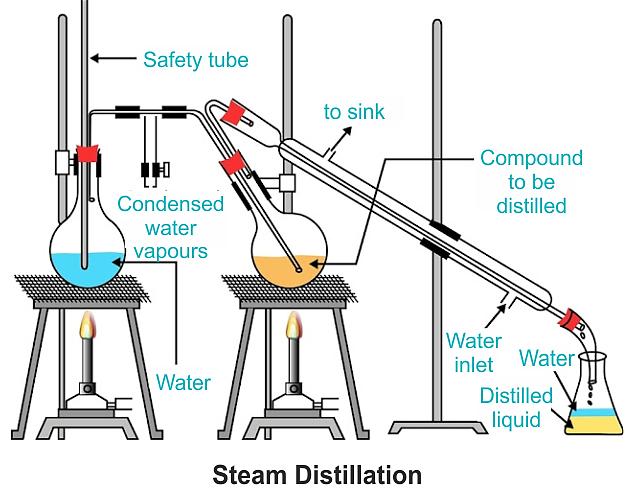Electrochemical Cell Chemistry Investigatory Project PDF Class 12
PDF Download Link Given Below
To Get the Link Scroll Down to end of this Page
INTRODUCTION
An essential oil is a concentrated, hydrophobic liquid that contains volatile aromatic compounds derived from plants. These oils are also known as volatile oils, ethereal oils, or aetherolea. Essential oils consist of highly volatile substances that can be extracted from a wide variety of plant species. Distillation-based recovery methods such as steam distillation and vacuum distillation are commonly used for extracting essential oils from plant materials.
Almost all naturally occurring essential oils are composed of hydrocarbons like camphene, pinene, limonene, phellandrene, and cedrene, as well as oxygenated hydrocarbons including alcohols, aldehydes, esters, ethers, ketones, lactones, phenols, and organic acids. The characteristic aromas of essential oils primarily come from their oxygenated compounds, which also contribute to their stability against oxidation. In contrast, the hydrocarbon components are less stable and are mainly responsible for the degradation of the oils over time. To improve stability while preserving their aroma and flavor, hydrocarbons are often removed from essential oils.
ANISEED OIL (SAUNF)
- Botanical Name: Pimpinella Anisum
- Common Method of Extraction: Steam Distillation
- Color: Clear Aromatic
- Description: Distinctive scent of licorice, Rich and sweet.
- Constituents: a-pinene, camphene, B-pinene, linalool,
cis-anethole, trans-anethole, safrole, anisaldehyde, acetoanisole.
Uses of Aniseed Oil:
- In aromatherapy, aniseed essential oil is used to treat colds and flu.
- Aniseed oil can be made into a liquid scent and is used for both hunting and fishing. It is put on fishing lures to attract fish.
- Anethole, the principal component of anise oil, is a precursor that can eventually produce 2,5 dimethoxybenzaldehyde which is can be used in the clandestine synthesis of psychedelic drugs such as 2C-B, 2C-I and DOB.
- Oil of aniseed is also reported to be used as an aromatic carminative to relieve flatulence, and as an ingredient of cough lozenges in combination with liquorice.
- Essential oil is also used externally as an insecticide against small insects such as head lice, mites and vermin. It also has fungicidal properties.
CAROM OIL (AJWAIN)
- Botanical Name: Trachyspermum ammi
- Common Method of Extraction: Steam Distillation
- Aroma: Warm, Pungent, Peppery
- Extraction: Ajwain oil is extracted from the crushed seeds of ajwain by the method of steam distillation
Chemical composition:
The main constituents of the ajwain oil are thymol, gamma terpinene, pcymene, and beta-pinene. Alpha-pinene, alpha-thujene, beta-myrcene, carvacrol, limonene, and terpinene-4-ol. There are variations in thecomposition of ajwain oils depending upon the region where it is cultivated. For instance, ajwain oil collected from Southern India is rich in thymol
Uses of Carom Oil:
- Skin Ailments: Ajwain can help with pimples.
- Digestive Aid: One can treat indigestion, ulcers, and various other bacterial infections of the gut with ajwain seeds and essential oil.
- Aromatherapy: Useful in aromatherapy, ajwain oil offers calming sensations that relieves neuralgia and migraines.
CARDAMOM OIL (ELAICHI)
- Botanical Name: Elettaria cardamonum
- Common Method of Extraction: Steam Distillation
- Aroma: Very complex and smooth spice aroma
- Extraction: Cardamom oil is extracted using steam distillation method. For this, seeds of the fruit are used just before they ripe. The yield through this process is normally 1 to 5 per cent.
Chemical composition:
Chemical composition Cardamom oil contains sabinene, myrcene, apinene, b pinene, aphellandrene, limonene, pcymene, terpinolene, 1,8-cineole, y-terpinene, linalool, linalyl acetate, a-terpineol acetate, citronellol, nerol, terpinen-4-oil, aterpineol, geraniol, methyl eugenol and trans-nerolidol
Uses of Carom Oil:
Cardamom oil has a vast range of usage for treatment of sciatica, coughs, abdominal pains, spasm and nervous disorders. Traditionally, it is used for pulmonary disease, fever, digestive and urinary problems in India and China for over 3000 years. It is also used to flavour pharmaceutical products. Apart from pharmaceutical usage, cardamom oil is also used as a fragrant in soaps, perfumes and cosmetic products.
MATERIAL REQUIRED
- Steam generator (Copper Vessel)
- Round bottom flask (500 ml)
- Conical flask
- Condenser
- Glass tubes
- Iron stand
- Sand bath
- Separatory funnel
- Tripod stands
- Burners
- Saunf (Aniseed)
- Ajwain (Carom)
- Cardamom (Elaichi)
- Petroleum ether (60-80°C)
PROCEDURE
- Set the apparatus as shown in the picture of Experimental Setup.
- The apparatus consists of a steam generator connected to the round bottom flask through a glass inlet tube. The flask is connected to a water condenser through a glass outlet tube. Condenser is further attached to a receiver through an adaptor.
- Take about 750 ml of water in the steam generator and start heating to produce steam.
- In the round bottom flask take about 75 gm of crushed Saunf, Carom or Elaichi.
- A vigorous current of steam from steam generator is passed through the round bottom flask
- A part of the steam condenses in the round bottom flask As more and more steam are passed through, the steam volatile components of Saunf pass through the condenser along with steam. These contents on condensation are collected in the receiver.
- The contents in the round bottom flask may be heated by a Bunsen burner to prevent excessive condensation of steam.
- The process of steam distillation is continued for about half an hour.
- Transfer the distillate to a separating funnel and extract with 20 ml portions of petroleum ether 3 times.
- Combine the petroleum ether extracts in a 250 ml conical flask and dry it with the help of anhydrous sodium sulphate.
- Remove the solvent from the dried filtrate by careful distillation in a water bath
EXPERIMENTAL SETUP

OBSERVATION
Saunf (Aniseed)
- Weight of Saunf taken = 100 gm
- Initial Weight of the bottle = 10gm
- Weight of bottle + essential oil = 11.25 gm
- Weight of essential oil extracted =1.25 gm
- Percentage of essential oil =1.25 %
- Colour of the oil = Colourless
- Odour of the oil = Saunf like smell
Ajwain (Carom)
- Weight of ajwain taken = 75 gm
- Initial Weight of the bottle = 10 gm
- Weight of bottle + essential oil = 11 gm
- Weight of essential oil extracted = 1 gm
- Percentage of essential oil =1.33%
- Colour of the oil = Colourless
- Odour of the oil = Ajwain like smell.
Cardamom (Elaichi)
- Weight of Elaichi taken = 100 gm
- Initial Weight of the bottle = 10 gm
- Weight of bottle + essential oil = 11 .25gm
- Weight of essential oil extracted =1.25 gm
- Percentage of essential oil = 1.25%
- Colour of the oil = Colourless
- Odour of the oil = Elaichi like smell.
RESULT
The essential oils were successfully extracted from Saunf (Aniseed), Ajwain (Carom), and Elaichi (Cardamom) using the method of steam distillation. The percentage yield and physical characteristics of the oils were observed as follows:
Plant Material | Weight Taken | Oil Extracted | Percentage Yield | Colour | Odour |
Saunf (Aniseed) | 100 gm | 1.25 gm | 1.25% | Colourless | Saunf-like |
Ajwain (Carom) | 75 gm | 1.00 gm | 1.33% | Colourless | Ajwain-like |
Elaichi (Cardamom) | 100 gm | 1.25 gm | 1.25% | Colourless | Elaichi-like |
CONCLUSION
The experiment successfully extracted essential oils from Saunf, Ajwain, and Elaichi using steam distillation. All oils were colorless and had characteristic smells. Ajwain gave the highest yield (1.33%), followed by Saunf and Elaichi (1.25% each). This shows that steam distillation is an effective method for obtaining essential oils from plant materials.
PRECAUTIONS
- Use clean and dry apparatus to avoid contamination of the essential oils.
- Crush the plant materials properly to increase surface area for better oil extraction.
- Ensure all glass joints are airtight to prevent loss of steam and vapors.
- Maintain a steady steam flow throughout the process for efficient distillation.
- Avoid overheating the round bottom flask to prevent burning of the plant material.
- Handle hot apparatus carefully using tongs or gloves to avoid burns.
- Use anhydrous sodium sulfate properly to remove moisture from the oil extract.
- Dispose of chemicals like petroleum ether safely and according to lab safety guidelines.
Perform the experiment in a well-ventilated area or under a fume hood due to volatile substances.

